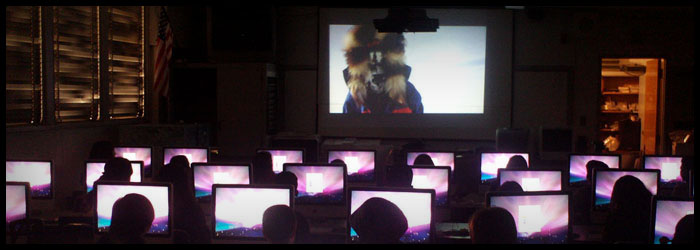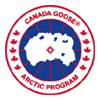

There is a sense of adventure in everyone; a yearning to step beyond the commonplace and routine. impossible2Possible (i2P) is a not for profit organization that uses the theatre of adventure to build unique and meaningful learning experiences.
Knowledge is continuously gained through both personal and environmental experiences. Experiential learning is a philosophy of education that aims to tie concrete lessons with abstract learning. By enlisting the latest technologies i2P takes experiential learning to another level by linking world-class adventurers and extraordinary expeditions to the classroom. This 21st Century program offers a spontaneous and interactive learning environment that ties real life adventures to a standard curriculum in a manner that will inspire students and teachers alike.
The World of Chemistry - Curriculum Overview
In honor of the International Year of Chemistry (see: iyc 2011) i2P will take the principles of
chemistry out of the classroom and into the laboratory of the natural world. Chemistry is the
science of matter, and how matter changes in different environments and
conditions.

Bolivia's Salar de Uyuni, nestled high in the Andes Mountains, is an
ideal location to explore the world of chemistry. The largest salt
flats on Earth, the Salar is a lake which is covered with a crust of
salt up to 10 meters thick, strong enough to support vehicular
travel. Below the crust lies a lake composed of water, salt,
magnesium and over half the world's lithium reserves. The Salar, which is ten and a
half thousand square kilometers in area, is the flattest
location in the world. Adjacent to the Salar are a series of lakes
filled with magnesium, sulfur, manganese, boron, copper and
arsenic. At an elevation of almost 12,000 feet, the change in
atmospheric pressure impacts how matter and chemical reactions
behave in this environment, providing a unique opportunity to teach the fundamentals of chemistry.
In partnership with Simon Fraser University and the International Year of
Chemistry, i2P will conduct a series of experiments in this remarkable
environment that will bring the principles of chemistry alive. These experiments, conducted
under the supervision of a chemistry professor that is joining the expedition team, will be
broadcast live to participating schools and posted on the i2P website.
Curriculum
The following chemistry-related topics will be covered in a series of education modules posted on the i2P website through live webcasts,
experiments from the expedition team, supporting video, and web-based Q&A's.
The following chemistry related topics will be covered:
- Introduction: Chemistry & the Salar de Uyuni
An introduction to the country of Bolivia, the Salar de Uyuni, and the International Year
of Chemistry.
- The Philosopher's Stone - The History of Chemistry
A discourse on the history of chemistry from its birth in Egypt 5,000 years ago, to the
advent of Alchemy, the search for the philosophers stone, and the development of the
particle theory of matter.
- An Atomic World
A look at all the naturally occurring elements found in abundance in and around the
Salar de Uyuni - Sodium, Chloride, Lithium, Arsenic, Sulfur, Magnesium, Manganese,
Copper, Lead and Boron. The
unique properties of these elements will help illustrate
atomic theory, the development of the periodic table, and modern chemistry.
- The Building Blocks of Life
An investigation into the chemistry that underlies the creation of life. What is it
about
the elements hydrogen, oxygen, nitrogen and carbon that allow them to form
compounds that are the cornerstone of all earthy life processes? Curiously, the Salar is
almost
devoid of life. What does this tell us about the chemical processes needed to
support life?
- Running on Chemistry
How do chemical processes enable living organisms to function? By observing the
activity of the i2P team as it runs across the Salar, we will examine what chemically
occurs in the body that allows it to undertake a complex activity like running. How is
body chemistry influenced by the unique environment of the Salar which lies at 12,000
feet above sea level, is very dry, and can be very cold in May when the expedition takes place.
- The Fire Within
It will take a great deal of energy to run across the Salar de Uyuni. Food will fuel every
step, but how do human convert food into energy? Laws of chemistry that explain how
energy is used by the human body also explain all energy systems in the
world.
Chemistry helps us understand that energy cannot be
created or destroyed, only
converted from one form to another. It also
demonstrates that just as humans will die
without the energy of food,
so the natural world always proceeds toward a degraded
state of
randomness. If the tendency of the natural world is toward a random
distribution of all matter, then why is half the world's lithium
found in the Salar de
Uyuni?
Education Resource
The Expedition Bolivia team will set out in the second week of
May 2011. After acclimatizing to the elevation for a few days in the
capital of Bolivia, La Paz, the team will leave for Southwestern
Bolivia and the Salar De Uyuni. Once en route daily updates from
the field will be posted on the i2P website. These posts will
include:
- Daily chemistry experiments that employ the natural elements of the Salar de Uyuni
to illustrate basic principles of chemistry. These experiments will be lead by Dr. George Agnes,
chemist and faculty member at Simon Fraser University.
- Daily video blogs from the four Youth Ambassadors.
- A daily quiz linked to the chemistry curriculum.
- Daily webcasts that link the expedition team to participating schools, and allow school
children to interact live with expedition team members.
Audience
The i2P educational program is available to students of all ages. As a web-based service, primary
and secondary schools, institutions of higher learning, as well as individuals without school-affiliation can follow the expedition as it unfolds, and benefit from the education resources as the team progresses through the expedition. Here are some examples of how educators have incorporated elements of previous i2P expeditions:
About i2P
impossible2Possible is a 501c3 non-profit organization dedicated to advancing the field of
experiential learning. We achieve our mission by directly involving youth in extraordinary
expeditions, and communicating the experience of these expeditions to a larger student
audience through our free web-based education program. i2P has staged successful experiential learning
expeditions to the South Pole, Baffin Island, Sahara Desert and the Amazon Jungle. For more
information please see our website (impossible2possible.com).
For More Information
Matt Howe
i2P Educational Coordinator and Logistics
mhowe@impossible2possible.com
612-508-5555









